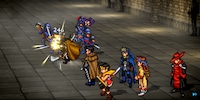
Review
The epitome of a subtle remake: Suikoden I & II HD Remaster: Gate Rune and Dunan Unification Wars review
by Kevin Hofer
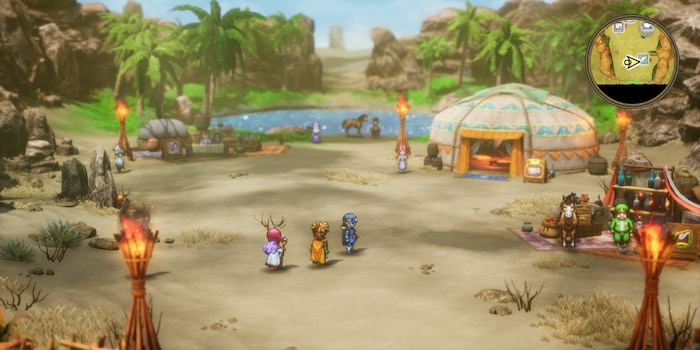
Square Enix combines two games in the new "Dragon Quest" remake. Parts I and II conclude the Erdrick trilogy just as impressively as Part III, which started it off.
If you're confused after these introductory words, I understand. The remake order seems illogical at first. Square Enix decided to do this because the first three «Dragon Quest» games form a trilogy. Part III is the prequel, part II concludes the series. From this perspective, the approach makes sense.
In terms of realisation, Square Enix and the development teams are doing everything as they did with Part III - and that's absolutely right.
I can already feel the «Dragon Quest» DNA in Part I of the remake. It's amazing how strong the series was back then. This is not only due to the unique art style by mangaka Akira Toriyama, but also the game design by Yuji Horii and the music by Koichi Sugiyama. This trio characterised the magic of the series from the very beginning. In the main menu, I choose which of the two parts I want to play.
In the first JRPG, I play a nobody who claims to be a descendant of the legendary hero Erdrick, who saved the world in Part III. Of course, nobody believes him, so he has to prove it with his deeds and save the world from the dragon lord.
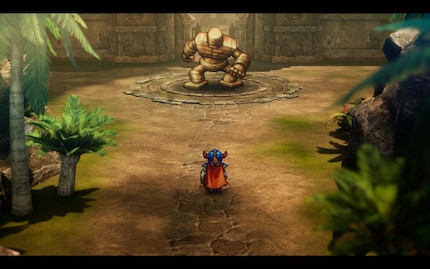
This - warning: spoiler! - he succeeds. In Part II, history repeats itself: the descendants of the hero from Part I follow in his footsteps and defeat evil once again.
The stories are classic good versus evil tales. Given the original releases in 1986 and 1987, I don't think that's a bad thing. The developers add story scenes that make the narrative tighter. I like the additional scenes - especially the underwater ones in Part II - but they can't hide the age of the stories. They seem less rounded than the remake of Part III, which itself is getting on in years. Nevertheless, I still enjoy them.

I like the story of Part II more than that of Part I. Here I control a group, in the first part only a hero who remains mute. The main hero in the second part doesn't speak either, but his companions, who I find in the course of the adventure, do. This brings me emotionally closer to the narrative.
Both titles benefit from the HD 2D upgrade. I like the style, my eyes are used to the opulent pixel art by now. Everything looks pretty, but I soak it up less than I did with the «Dragon Quest III» remake. The blurring is not as extreme as in «Octopath Traveler». The vibrant colours fit perfectly with «Dragon Quest» and Toriyama's character models.
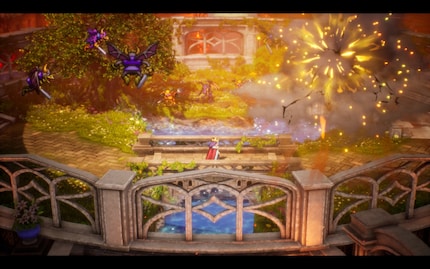
The graphics in the battles also look great. As in the originals, I fight in the first-person perspective. The refreshed models and animations make me forget that I can't see my characters
The soundtrack is a real treat: the unforgettable melodies by Koichi Sugiyama, played by the Tokyo Metropolitan Symphony Orchestra, lend the world epic grandeur.
The battles are turn-based. One big difference between the titles is the type of combat: In Part I, I fight alone. In Part II, I fight the opponents with my party, which allows for more strategic depth.
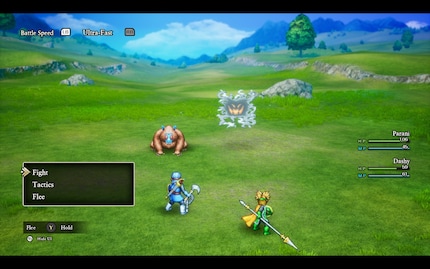
In the remake, I can let the computer fight for me. I choose the behaviour of the characters: give everything, fight wisely, focus on healing or cover myself. Due to the many random encounters with monsters, the automated combat is a welcome feature.
I can now see what kind of attacks the enemies are weak against, which is handy for newcomers. I can also influence the speed of the battles. These are welcome features, because in both games I have to level up my characters regularly, which is made easier by the higher combat speed. If this is too tedious or easy for you, you can adjust the difficulty.

After each battle, my characters receive experience points and level up. In addition to improved status points, they also gain new abilities. I can't choose these, they are determined by the character and the level. I can now learn new spells or abilities from scrolls that I find. The combat system in Parts I and II is not complex, but offers enough depth to prevent it from becoming boring. Nevertheless, it no longer feels fresh as a daisy.
Like Part III, Parts I and II invite you to explore. I find weapons, equipment and items in pots. I discover small, unmarked areas on the map. I learn about hidden treasures or distant places from NPCs. In Part II in particular, the world becomes bigger and I can discover new continents by ship. The games exude the magic of earlier JRPGs, where something can be hidden behind everything.

The hands-off approach to gameplay and story articles this. Neither the combat system nor the story is explained to me. I find out by talking to NPCs. Or I activate the remake-exclusive quest marker and the story logbook, which show me the way. A massive relief is the «Zoom» spell, which serves as a fast travel function and saves me a lot of walking.
Square Enix delivers a loving new edition of two JRPG classics with the HD-2D remake of "Dragon Quest I & II". The opulent pixel graphics and orchestral soundtrack breathe new life into the over 35-year-old games, while modern features such as fast travel, battle acceleration and optional quest markers make the game mechanics more accessible.
Despite the successful modernisation, the simple good versus evil stories and repetitive grinding cannot hide the age of the games. For fans of the series and JRPG nostalgics, the remake is nevertheless a clear recommendation.
Pro
Contra
From big data to big brother, Cyborgs to Sci-Fi. All aspects of technology and society fascinate me.
Which films, shows, books, games or board games are genuinely great? Recommendations from our personal experience.
Show all